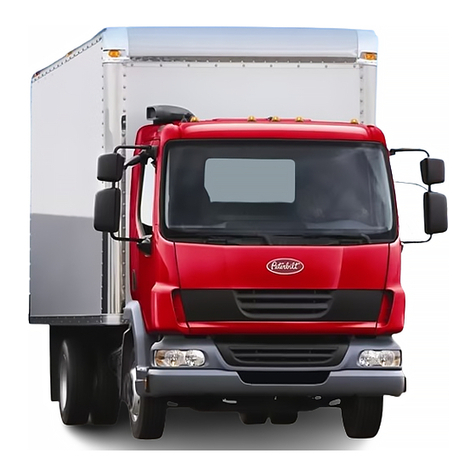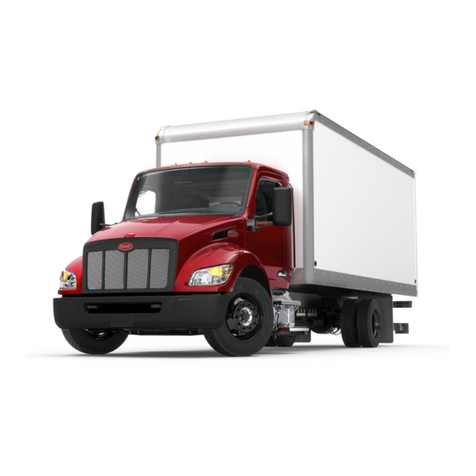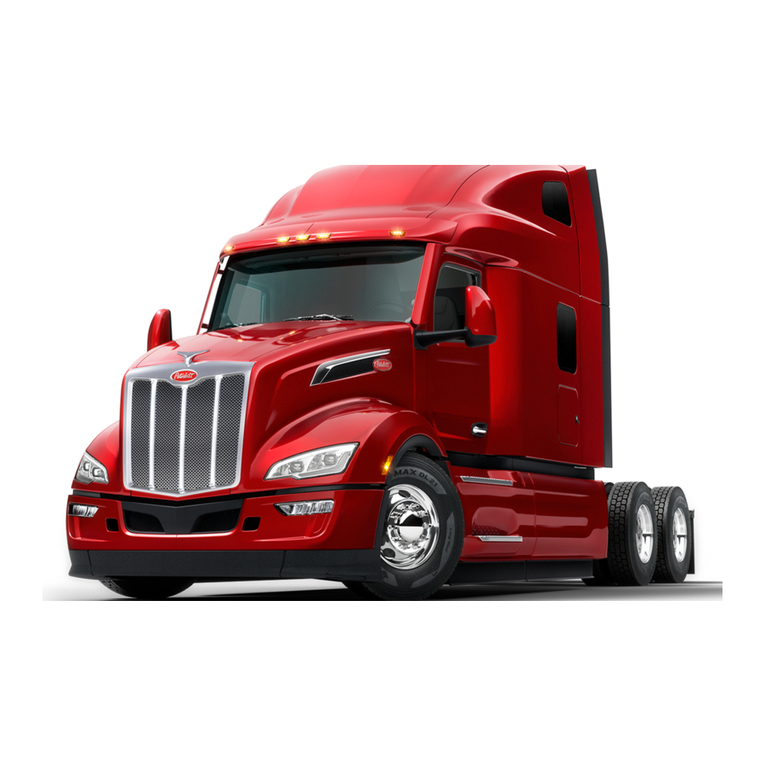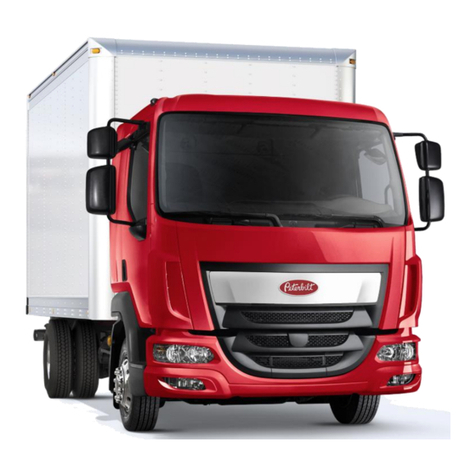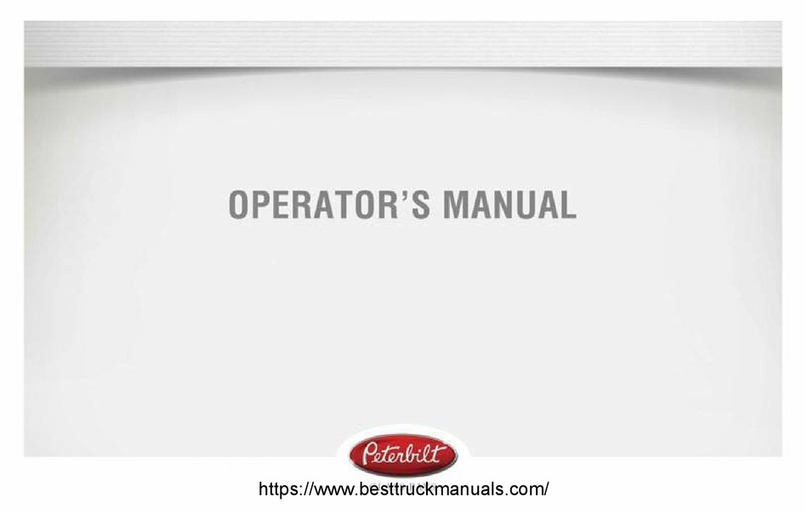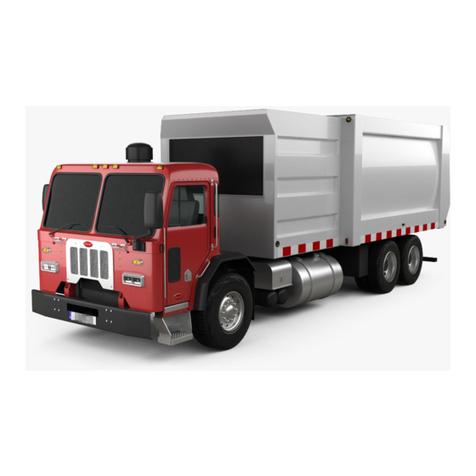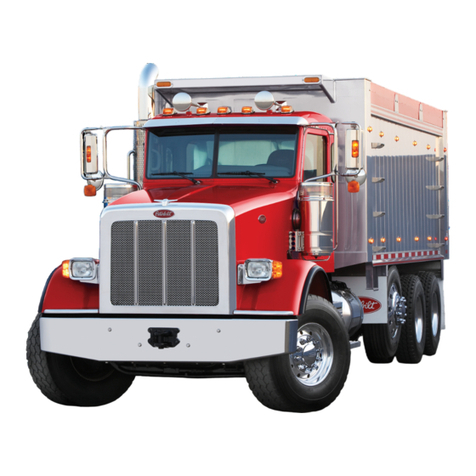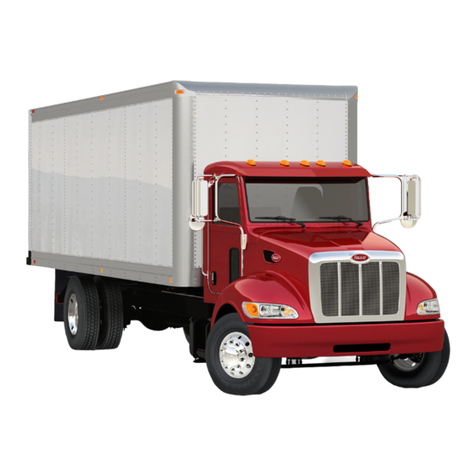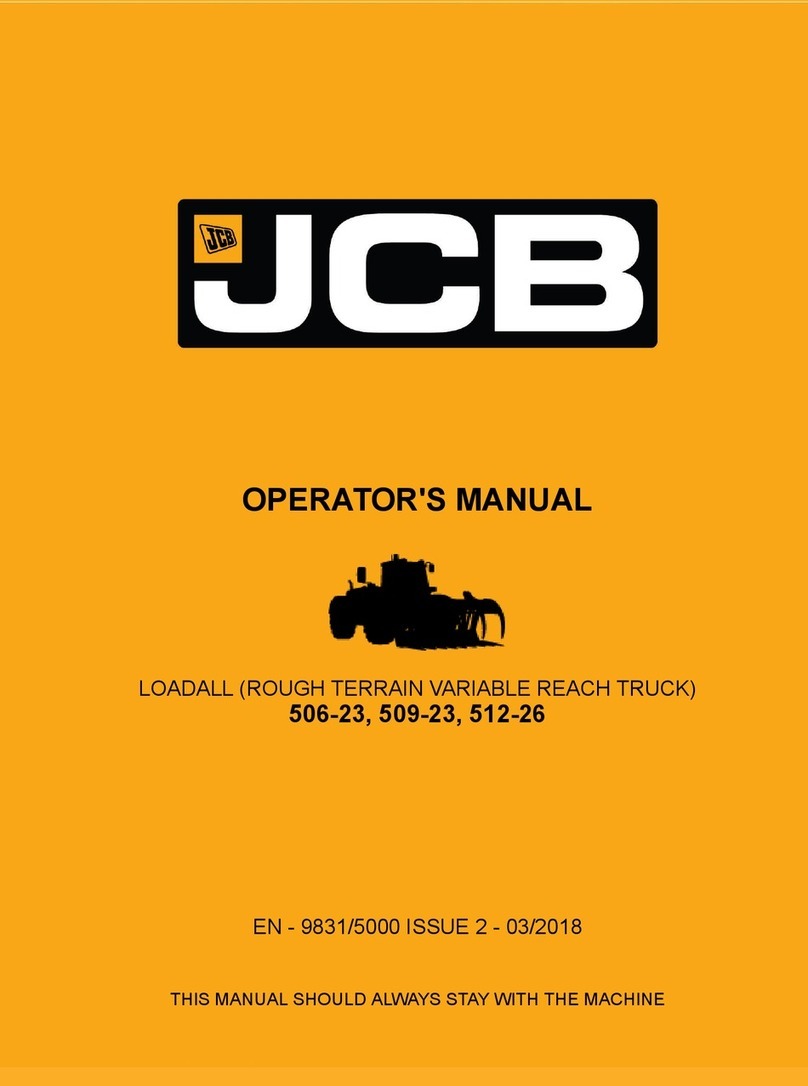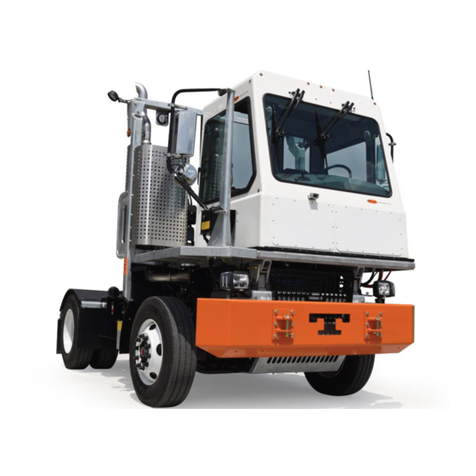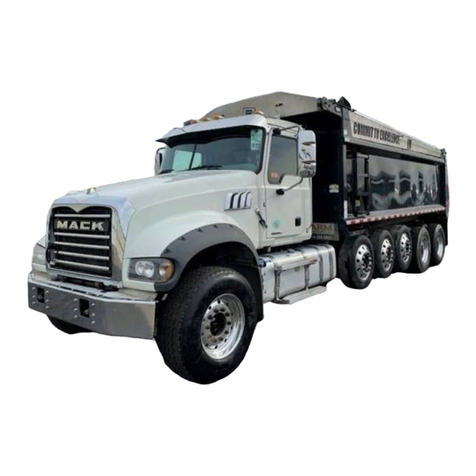
CLIMBING ONTO THE DECK PLATE PART 2: GETTING INTO & OUT OF THE CAB AND FRAME ACCESS
– 10 – Y53-6007 (R10/06)
Climbing Onto the Deck Plate
When you are climbing onto and off the deck plate, main-
tain at least three points of contact with your hands on the
grab handles and your feet on the steps.
WARNING!
• You can be hurt if you aren’t careful climb-
ing onto and off the deck plate. You can slip
and fall, especially if the surfaces are wet or
icy, or if you step in oil, fuel, or grease. Keep
steps clean. Always maintain at least three
points of contact between your hands and
feet and the steps and deck plate.
• Do not climb onto and off the deckplate–use
steps and grabhandle provided. If there is
no deck plate, or if proper steps and grab
handles aren’t provided, don’t climb onto
the area behind the cab. Peterbilt did not
intend for the area to be a step if handrails
or proper steps are not provided.
WARNING! Do not step on vehicle compo-
nents without antiskid surfaces or use com-
ponents not designed for entry-and-exit use.
You could fall and injure yourself if you step
on a slippery surface. For example:
• You could fall and injure yourself if you step
onto a fuel tank surface. A fuel tank is not a
step. The tank surface can get very slippery,
and you might not be able to prevent a fall.
Don’t step onto the surface of a fuel tank.
Use only the steps and handholds provided,
not chain hooks, quarter fenders, etc.
• Always reinstall steps before entering the
cab or accessing the deck plate. Without
steps, you could slip and fall, resulting in
possible injury to yourself.
NOTE: Any alteration (adding bulkheads, head-
ache racks, tool boxes, etc.) behind the cab or
sleeper that affects the utilization of grab handles,
deck plates, or frame access steps installed by
Peterbilt must comply with FMCSR 399.
The pictures that follow show you the right way to get on
and off the area behind your cab.
